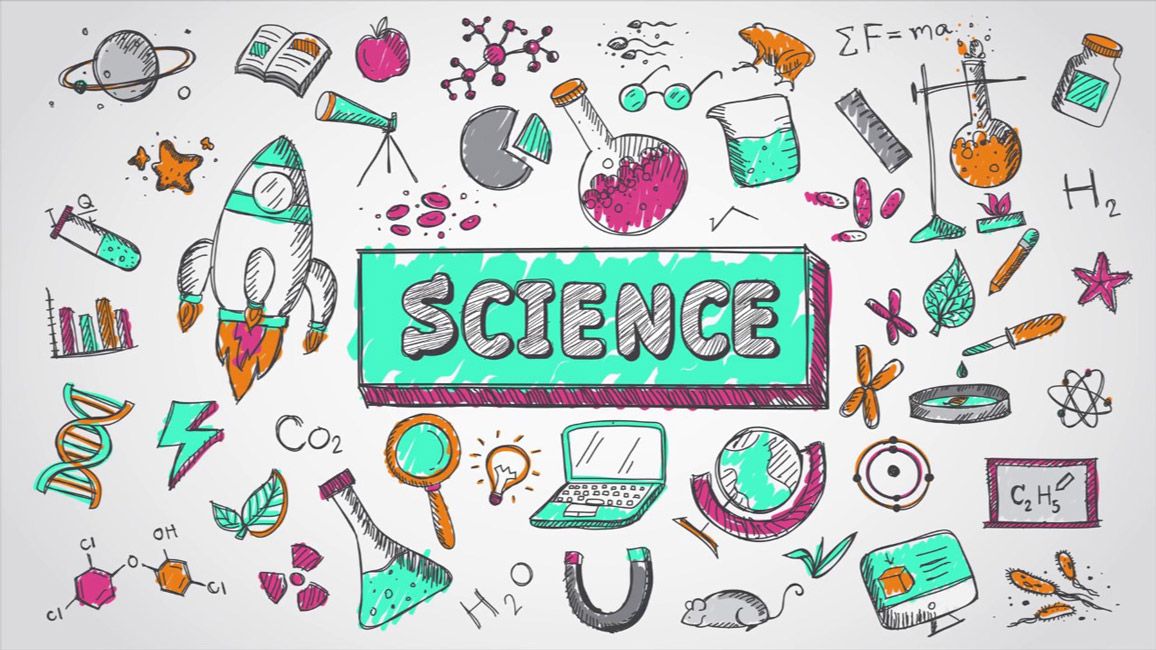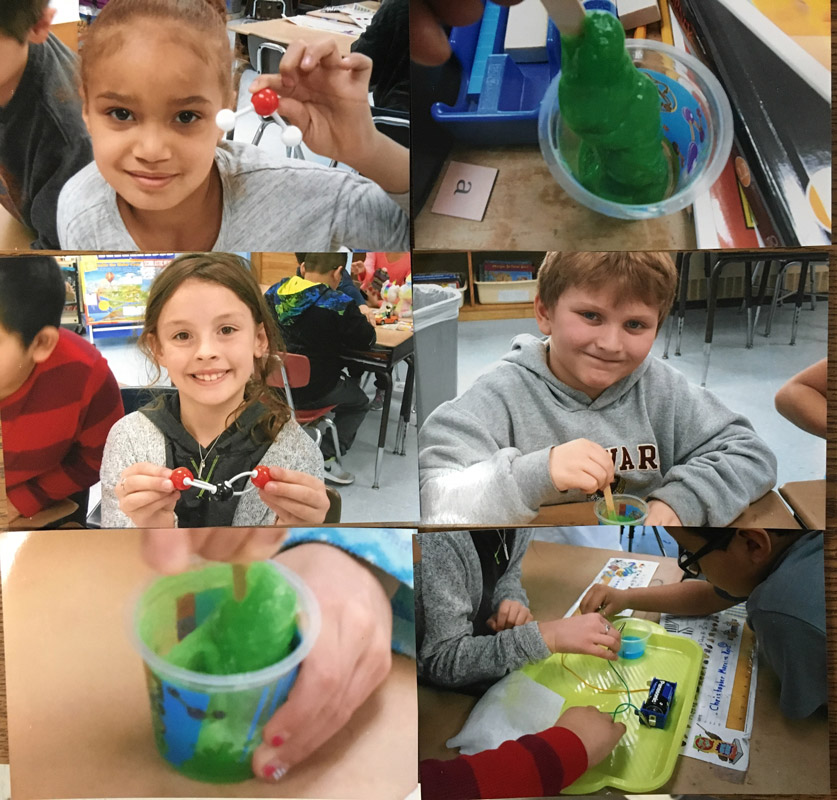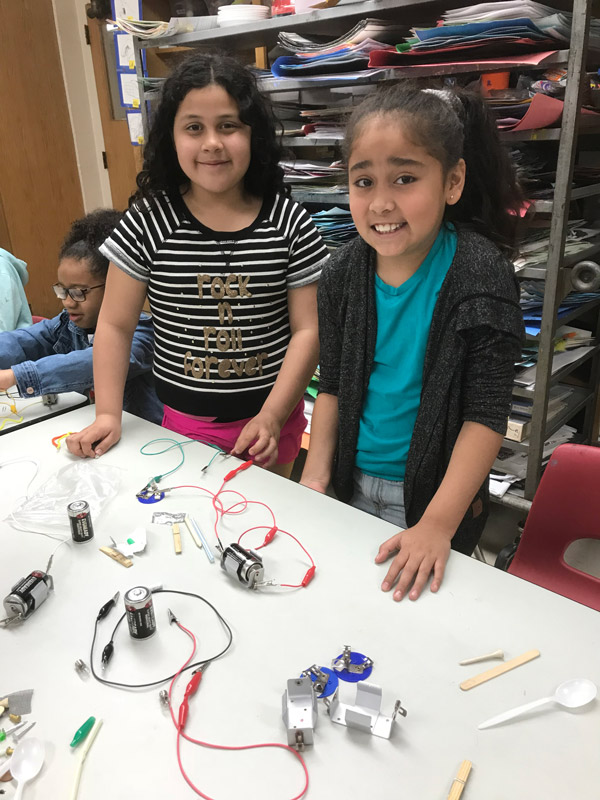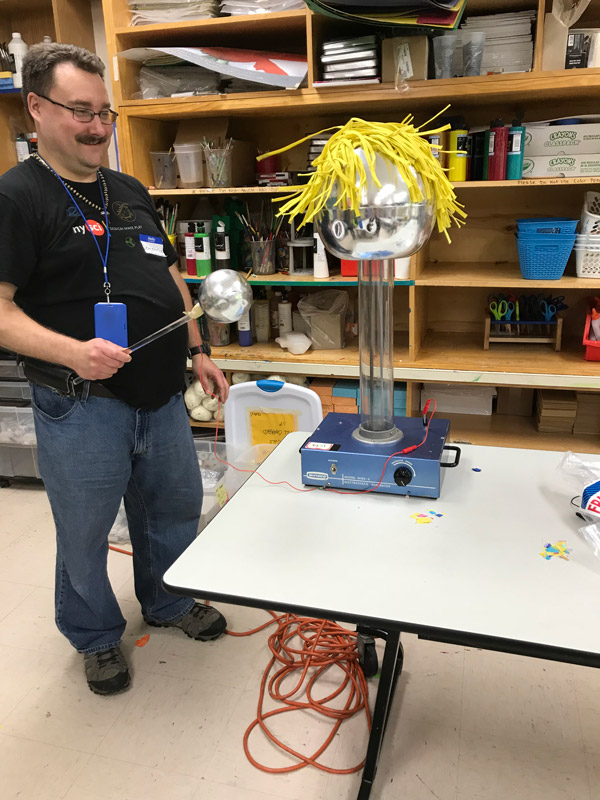Flower Hill Primary School students have plenty of questions when it comes to science and the youngsters got all the answers over the past month courtesy of two sources: Mad Science and the New York Hall of Science in Queens.
Flower Hill second graders performed some terrific hand-on activities, such as connecting models of atoms to create bonds. “It was cool putting together a model of carbon dioxide,” one of the youngsters said. “I liked when the volcano erupted,” said another. “He used food coloring, vinegar, soap and baking soda to make it happen.”
The Mad Science instructor took the time to discuss the three states of matter (solid, liquid and gas) and their relationship with each other.
Have you ever seen a nickel that looked like a penny? During one activity, a nickel dipped in water and copper sulfate and then hooked up to an electrical circuit did just that, turning copper in color.
The most popular activity for the second graders was making “slime.” One of the students revealed an important part of the process when she explained: “Slime was hard to stir. Adding sodium borax made it easier.” To put it simply, in the words of another youngster: “Making slime was fun!”
“Fun” was the operative word for the fourth graders as well, as they participated in two science workshops conducted by the New York Hall of Science in Queens. On the first day, students made some good connections as they learned about electrical circuits. Being able to differentiate between an insulator and a conductor was the key to understanding how an electrical circuit worked. Students tested objects made from many different materials, such as rubber, plastic and metal. “The best part was making the bulb light,” one of the Flower Hill students said.
During the second day of workshops, students participated in a lesson called “float, sink or flink.” What’s “flink” you ask? It’s when an object is partially under the water, but also floating on top. How it all go over with the students? “I like putting objects in the water to see which float, sink or flink,” quipped one of the youngsters.
To demonstrate the concept of density of liquids, the visiting instructor had students place drops of four liquids (syrup, soap, rubbing alcohol and oil) into a container. The liquids settled into place in this order from top to bottom: oil, alcohol, soap and syrup.
“These terrific workshops enabled those young, inquisitive minds to get a little more curious about the role science plays in their everyday life,” Flower Hill teacher James Lauter said. “Oh yeah, it was also a lot of fun.”



